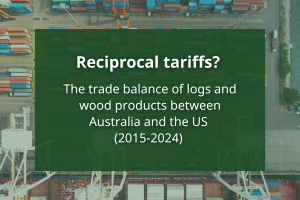The peculiarities of the Australian economy continue to present themselves, with a weak economy lifting around 9,000 people off the unemployment line in May, as the jobless rate fell from 4.1% in April to 4.0%. Overall, as further evidence of the robust demand for labour, 39,700 jobs were added to the economy in May, with most being full time jobs, leaving the participation rate steady at 66.8%.
As the chart shows, the participation rate has been tracking higher for the last two years and is only now starting to flatten out. This is important because it tells us that the tiny amount of spare labour that resided in the economy in say 2022, has now pretty much been soaked up. Again, as the chart shows, if the participation rate is above 67%, it will quickly fall to the more manageable mid-66% range. The point? The marginal supply of nominally available labour in the Australian economy is very small right now.

Although conditions for labour remain tight nationally, and in most states and territories, conditions have eased over the past few months. For instance, the NAB quarterly Business Survey shows firms identifying labour as a constraint on output declining from 86.5% in March 2023 to 78.3% in March 2024. That is still high – three quarters of businesses say labour is constraining their growth! – but it is an improvement.

In addition, the ratio of job vacancies to unemployment has declined over the same period from 0.85 in March 2023 to 0.63 in March 2024. This latter measure is more likely a leading indicator of employment and suggests the conditions (availability of labour) have not only improved, but are probably still improving, albeit slowly.
It is not unreasonable to wonder where the state of the labour market would be if the surge in migration had not occurred over the last two years. Had the pent-up demand for labour arising from the population stagnation of the pandemic not been alleviated by migration, the nation would be significantly short of the required workforce.
Importantly and in addition, as Michael Read observed in the Australian Financial Review:
“The majority of the jobs growth over the past year was in industries that are primarily government funded. About one in two jobs created in the 12 months to March were in the health and social assistance industries, …”
The two job metrics mentioned above suggest a decline in labour demand, both current and in prospect which seems counter-intuitive given the increase in employment in May.
Some of the answer to how these apparently different trajectories is reconciled lies in the hours worked. Whilst still above average, hours worked per capita have declined from 88.09 in March 2024 to 87.10 in May 2024. Banked up annual leave, school holidays and a workforce that put its head down and worked long and hard coming out of the pandemic with less total labour available, might well be catching up with itself and having a little breather.
Still, as the chart shows, hours worked per capita are solidly above the average. Something had to give.

Other measures of capacity are the underemployment rate (defined as the number of unemployed people and employed people seeking more work) and the underutilisation rate (defined as the combined unemployment rate and underemployment rate) which remained steady at 6.7% and 10.7% respectively.
Notably, after coming down significantly as the pandemic ended, underemployment dipped below expectations and toward historic lows. In part, that was because there was insufficient labour in the economy and the number of people working two or more casual or part time jobs lifted sharply for a time.

Policy makers are consistent in wanting to hold onto the gains in employment which have been made since the pandemic. A popular measure of macro-policy success is how many jobs have been created, coupled with the headline unemployment rate. Thus, a low unemployment rate and a high participation rate is evidence that the economy is working for households and families and individuals.
In that light, there is no doubt that the strong employment is enabling households to manage the difficult cost of living pressures arising from inflation and interest rates.
However, this highlights the interconnected and somewhat circular challenge for policy makers.
To deal with inflation, the nation needs to curtail demand and also needs to increase supply. To increase supply – particularly in the services sector – the economy needs more labour. High levels of employment mean it is more likely that at a macro level, we still have demand slightly ahead of capacity. That is – albeit modestly because we are operating at the marginal limit of supply – a contributor to inflation.
It is the lags in these responses that we are experiencing now. Those advocating for further interest rates rises seek to accelerate that movement towards balance. The soft landing – achieved either by a highly refined set of integrated economic manoeuvres or alternatively, by sheer luck – would result in the retention of the gains in employment and the simultaneous contraction of inflation to acceptable levels.
The ’luck’ factor is potentially at play over the next year, because the employment data is serendipitously pointing to labour supply being near its capacity, at the same time as demand for it is moderating, due to the slowing economy linked to higher interest rates, as much as anything else.
A soft landing looks viable, but don’t breathe too heavily – that could be the breeze that delivers the ‘ouch’, at least for the labour market.



